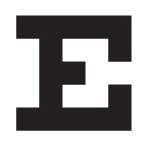Eye chart
with sports figures
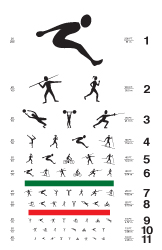 | | Sports figures liven
up the traditional structure of the eye chart. |
Eye
chart with animal silhouettes
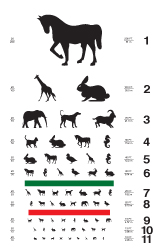 | | Kids, veterinarians,
and animal lovers think this eye chart is far more fun. Who knows,
maybe it will work on your pet as well! |
Eye chart
with road signs
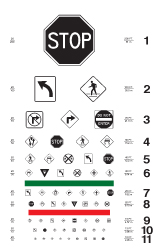 | | Let's test drivers
on what really matters -- their ability to see a stop sign or a
crosswalk warning. |
Eye chart with
dominoes
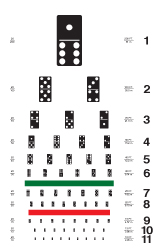 | | Domino tiles are
much harder to read at a distance than simple letters, but who
doesn't like a challenge? | |
| Eye chart
with hieroglyphs
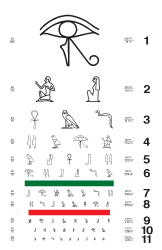 | | Need to test the
vision of an Egyptologist, or perhaps a long-dead Pharaoh? |
Eye chart with
runes
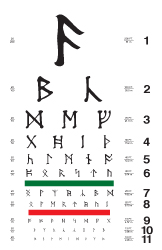 | | This eye chart draws
from a runic alphabet. |
IPA eye
chart
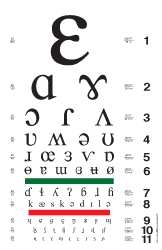 |
| This eye chart is entirely IPA symbols drawn from the
International Phonetic Alphabet. It is a perfect gift for the
linguist in your life. |
Chemistry eye
chart
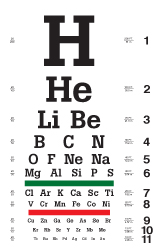 | | This eye chart for
chemistry classrooms and chemistry labs contains the first 50
chemical elements in order. |
Eye chart with DNA
bases
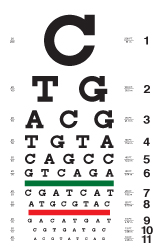 | | This eye chart
contains just the letters for the four bases of DNA: A, T, G, and C.
It's perfect for a biology classroom or genetics lab. |
|


